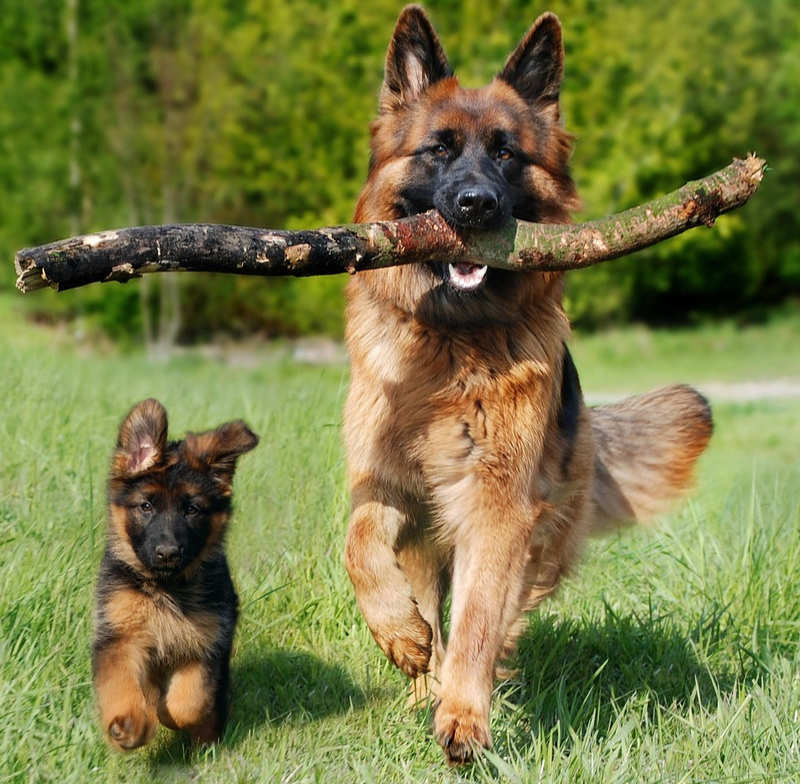If your dog seems to ignore you, it can be frustrating. Whether you’re calling them for a walk, trying to teach a new trick, or simply wanting their attention, a dog ignoring you can feel like an uphill battle. The good news is that this behaviour is usually fixable, but understanding the reasons why it happens and knowing how to correct it is essential. In this guide, we’ll explore the possible reasons your dog is ignoring you, how to correct this behaviour, and how to stop it from happening again.
Why is My Dog Ignoring Me?
There are several reasons why a dog may choose to ignore you. It’s important to understand that it’s not necessarily out of defiance or malice, but rather a result of their needs or how they have been trained. Understanding these reasons can help you address the issue effectively.
1. Lack of Attention or Training
Dogs, especially puppies, can sometimes ignore commands simply because they haven’t been properly trained to respond. Without the right training, your dog might not associate certain sounds (like your voice) with any specific action. For example, a dog that hasn’t been trained to respond to basic commands like “come” or “sit” might not know how to react when you call.
2. Overstimulation
Some dogs, particularly high-energy breeds, can become overstimulated when they are exposed to too much activity. Whether it’s a loud environment, too many people, or even a new smell or object, an overstimulated dog may tune you out. This is common in breeds like Border Collies, German Shepherds, and Australian Shepherds, who have very high energy levels and thrive on stimulation and activity.
3. Disinterest or Boredom
Certain breeds are less motivated by food or play than others. For example, older dogs or breeds that are more independent, such as the Shiba Inu, Basenji, or Afghan Hound, may ignore commands simply because they are disinterested or don’t feel the need to engage with you. Additionally, if your dog isn’t being provided with enough mental stimulation or physical exercise, they may begin to ignore you out of boredom.
4. Stress or Anxiety
If your dog has had a negative experience with training or has been exposed to stressful situations, they might ignore you as a coping mechanism. Dogs that suffer from separation anxiety, for instance, may not respond well when you call them, especially if they feel anxious when they aren’t near you. Similarly, trauma or lack of positive reinforcement in training may lead to a lack of trust and response.
How to Correct the Behavior
Once you understand the reasons behind your dog’s behaviour, you can begin to correct it. The key is consistency, patience, and positive reinforcement. Here are some steps you can take:
1. Positive Reinforcement
One of the best ways to get your dog to stop ignoring you is to use positive reinforcement. Reward your dog with treats, praise, or their favourite toy whenever they respond to your commands. Dogs are more likely to repeat behaviours that are rewarded, so consistency is key. Start with simple commands like “sit,” “stay,” or “come” and reward them each time they successfully follow your instructions. Over time, they will learn to associate your commands with positive experiences.
2. Training Sessions
Training sessions should be short, engaging, and consistent. Begin by practicing in a quiet, distraction-free area where your dog can focus on you. Use treats and praise to encourage your dog to follow your commands. If you’re working with a more independent breed, keep training sessions brief but frequent to maintain their attention and avoid overstimulation.
3. Avoid Punishment
Avoid harsh punishment when your dog ignores you. Negative reinforcement (such as yelling or scolding) can cause anxiety, stress, and further disconnection between you and your dog. Instead, focus on rewarding positive behaviours and redirecting their attention when they get distracted.
4. Exercise and Mental Stimulation
Physical exercise and mental stimulation are crucial for all dogs, but especially for active breeds. Breeds like Border Collies, Huskies, and Jack Russell Terriers have high energy levels and need regular exercise to burn off that excess energy. If your dog is consistently ignored because of a lack of stimulation, try incorporating more walks, runs, or interactive play into your daily routine. Puzzle toys and brain games can also keep their minds engaged, making them more responsive to you.
5. Create a Routine
Dogs thrive on routine. If your dog knows when to expect food, walks, playtime, and training, they are more likely to respond to you when you need their attention. Try to establish a consistent schedule for meals, walks, and training sessions so your dog can predict when they will get your attention. This predictability helps your dog stay engaged and focused on you during interactions.
Activities You Can Do to Improve Engagement
Getting your dog to stop ignoring you isn’t just about correcting bad behaviour—it’s also about building a deeper connection with them through shared activities. Here are some activities you can do together to improve communication and build trust:
1. Interactive Play
Engage your dog in interactive play that requires them to listen and respond to you. Fetch, tug-of-war, or hide-and-seek are excellent activities for getting your dog’s attention. For example, when playing fetch, call their name and give them a command to “sit” before throwing the ball. This not only builds a bond but also reinforces training.
2. Clicker Training
Clicker training is a powerful tool for teaching your dog commands and reinforcing good behaviour. The clicker creates an association between a specific behaviour and a reward, which can help keep your dog focused on you. For example, when your dog performs a trick or responds to a command, click the clicker and immediately reward them with a treat.
3. Socialization
Socializing your dog with other dogs and people can also help reduce their tendency to ignore you. By getting your dog used to different environments and situations, they become more comfortable and attentive to you in various settings. Take them to dog parks, on walks through busy areas, or to dog-friendly events to expose them to new experiences.
4. Agility Training
Agility training is another fantastic way to improve your dog’s attention span and responsiveness. It involves teaching your dog to navigate through obstacle courses, which can be both mentally and physically stimulating. It’s also a great bonding experience that encourages your dog to focus on you while working together.
Preventing Ignoring in the Future
To prevent your dog from ignoring you in the future, consistency is crucial. Here are a few tips to ensure that your dog stays engaged and responsive:
1. Continue Positive Reinforcement
Even after your dog has learned to respond to you, continue rewarding them for good behavior. Reinforcement helps to maintain their attention and strengthens the bond between you.
2. Keep Training Fun
Training should always be enjoyable for both you and your dog. If your dog associates training with boredom or frustration, they will be less likely to engage with you. Keep sessions fun, varied, and rewarding.
3. Monitor Their Health
Health problems can sometimes cause dogs to ignore their owners. If your dog seems unusually distant or unresponsive, it’s worth checking for any underlying health issues. Pain, hearing loss, or vision problems could contribute to their lack of attention. If you suspect a health issue, consult your veterinarian.
Learning how to get your dog to stop ignoring you requires patience, understanding, and a consistent approach. By addressing the root causes, such as lack of training, overstimulation, boredom, or stress, you can help your dog become more responsive. Use positive reinforcement, regular exercise, and engaging activities to foster a stronger bond with your dog, ensuring they remain attentive and engaged with you.
Featured Image by Petra from Pixabay
Discover more from A Tail of Two Dogs
Subscribe to get the latest posts sent to your email.



Leave a Reply